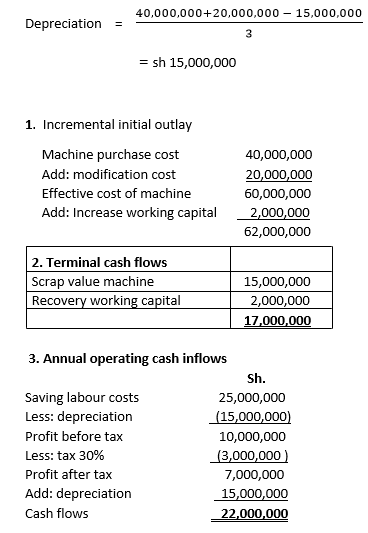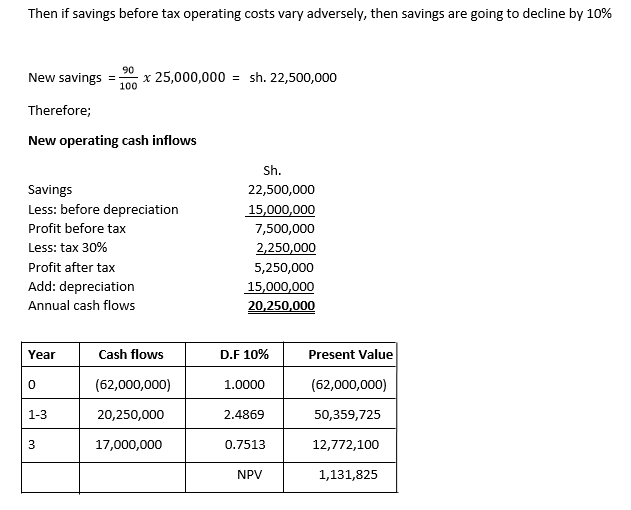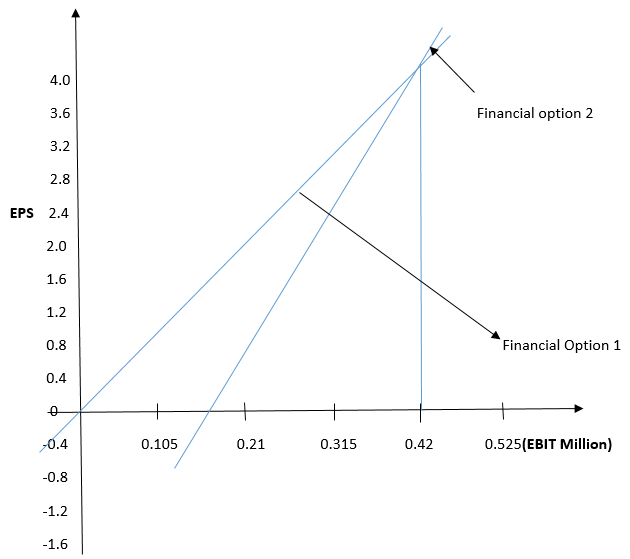Total market value equity = no. of shares x MPS.
Mkuki equity value = 50 x 22 = Sh 1,100 million.
Ngao equity value = 65 x 2.4 = Sh. 156 million.
Total equity value = 1,100 + 156 = Shs 1256 Million.
Asset beta = Equity beta / (1 + D / E(1 - T)).
Mkuki asset beta = 1.37 / (1 + 60 / 1,100(1 - 0.3)).
1.37 / 1.038 = 1.32.
Ngao Ltd Asset Beta = 2.5 / (1 + 12.5 / 156(1 - 0.3)).
2.5 / 1.056 = 2.37.
Combined beta (β
α ) = (1,100 / 1,256 x 1.32) + (156 / 1,256 x 2.37) = 1.45.
Where:
B
α = Asset Beta combined = 1.45.
B
e = Equity beta combined
D = Total debt value = 60 + 12.5 + 200 = Sh. 272.5 Million.
β
e = 1.45 (1 + 272.5 / 125.6(1 - 0.3) = 1.67.
Combined cost of equity using CAPM = Risk free rate + Market risk premium x Beta.
5.2 + 3 × 1.67. = 10.21%.
Post Acquisition weighted average cost of capital (K
o).
K
o = K
e - (K
e - K
d)D/V.
10.21 - (10.21 - 7)272.5 / 1,528.5.
10.21 - 0.57 = 9.64%.
| Year |
Combined
cash(millions) |
DF 9.64% |
PV(millions) |
| 1 |
60.3 + 15.2 = 75.5 |
0.9121 |
68.862 |
| 2 |
63.9 + 15.8 = 79.7 |
0.8319 |
66.301 |
| 3 |
67.8 + 16.4 = 84.2 |
0.7587 |
63.883 |
| 4 |
71.8 + 17.1 = 88.9 |
0.6920 |
61.521 |
| 5 |
76.1 + 17.8 = 93.9 |
0.6312 |
59.268 |
| 6 to |
93.9(1.015)/0.0964 = 988.7 |
0.6312 |
624.053 |
|
|
|
943.89 |
|
Sh."million" |
| Present value cash flow |
943.89 |
| Sale of land |
14.00 |
| Mkuki debt |
(60.00) |
| Ngao debt |
12.50 |
| Post acquisition debt |
(200.00) |
|
710.39 |
The post acquisition value of Sh. 710.39 million is less than current equity value of Mkuki of
shs.1,100 million so acquisition is not sensible.










